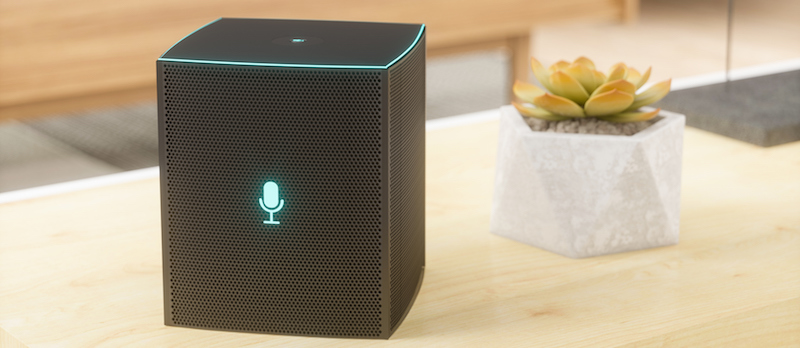Voice Search: Bringing Web Accessibility and Convenience Together in 2020

By Sam Stemler
A dramatic increase in internet-connected devices such as smart speakers and smart tvs has brought voice search into the mainstream. However, web usability through voice commands and readouts is not brand new technology. Many people who don’t use computers or the internet in traditional ways have been using this technology for years through screenreaders. As voice search becomes more common, it invites changes to the web landscape that can benefit all users.
What You Need to Know About Voice Search in 2020
More Devices Than Ever Use Voice Search
Though most of us probably don’t think about it very often, computers aren’t very versatile from a mechanical perspective. A computer requires a clear and visible screen to display a result, and a mouse or keyboard for inputs. Though we’ve changed these things to make them very small (your smartphone) or very large (your smart tv), these changes are far from perfect. Plugging a keyboard into your smart tv isn’t practical and watching videos on your small smartphone screen isn’t much fun. Moreover, other devices present more challenges. How could you possibly type into a wearable device? How could you see a result on a device without a screen, like a speaker? This is where voice search and voice commands come in.
In 2017, experts estimated that voice search would account for 30% of search activity by 2020. These projects appear to be on target, with 35% of smartphone users alone reporting using voice search at least once a week. This doesn’t include searches made on the 118 million smart speakers now in use, wearables like the smartwatch, or a long list of other connected devices. As internet connectivity becomes a larger and larger part of various devices we use everyday, voice search will continue to expand.
How Voice Search Results Work
Ask a smart speaker like Google Home or Alexa a question, and it will read out an answer derived from online search results. How do smart speakers and other connected devices decide what to read?
Smart speakers determine which search results to read out in similar ways that search engines determine which results to display. An algorithm determines content that is reliable, relevant and easy to understand, and then organizes results. A smart device can only read out one to three results, so it generally chooses the three best. A part of this automated decision-making process is whether or not the device can actually interpret the results. This is where optimizing for voice search comes in.
By developing Featured Snippets in 2014 and expanding them in later years, Google started to solve this problem early on. Featured Snippets displayed a quick blurb to answer a user’s question as directly as possible, then displayed the rest of the results underneath. This is very similar to the requirements for a brief response to a voice search. Many of the responses Google Home and other smart devices give are based on Featured Snippets.
Some voice searches require a longer list of results. In an effort to solve this problem, Google released Speakable. This markup makes it easier for devices to read out the content on a website. Though it is currently in beta, Speakable has the potential to make more search engine results accessible through a voice search. This can also make complex voice searches easier to ask and complex results easier to provide.
How to Optimize for Voice Search
You don’t need to know Speakable to get your results on a voice search. Optimizing for a featured snippet can be a good way to get your content seen as well as heard. This involves restating the question, using lists and snippets where appropriate, and utilizing accessibility best practices to ensure a device can recognize and read your content. This allows a smart device to parse through the content and code on a page to find an answer to the user’s question.
Even if your content doesn’t show up on a voice search, optimizing this way is likely to increase your SEO value regardless, and provide other benefits. As the top results of typeable searches and the top results of voice searches grow closer together, this optimization will become increasingly important.
The Internet is Changing—Again
Up until the last five or ten years, the internet was primarily a text-based world accessible through a computer. However, the wide availability of internet access, smartphones, and cameras changed it. There are now more videos and images than ever. These changes brought a host of accessibility problems, many of which have yet to be fixed.
The expansion of internet-connected devices relying on voice search has the potential to change the landscape again, and solve some of these accessibility problems. Those who have difficulty reading a computer screen or typing a search can utilize the same voice search technology that millions of others use. And while internet connected devices are still expensive, they’re often more affordable than expensive screenreading software and other assistive devices. As webmasters vie for top search spots for voice search, they’ll also be making changes for accessibility. Though there will certainly be other challenges, this is a change that will continue through 2020, and one webmasters should pay attention to.
